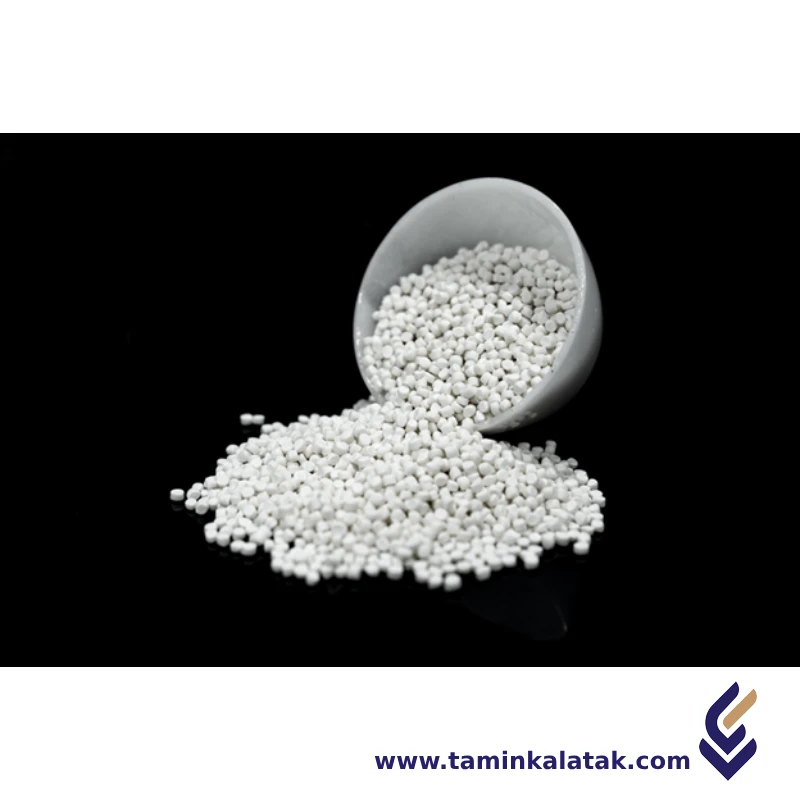Polymers are made up of very large molecules made up of many repeating units called monomers, which ultimately form this long polymer chain
A compound is a polymer blend mixed with additives, fillers, and reinforcements to achieve specific properties for end-use applications. A masterbatch is a concentrated mixture of additives or pigments in a carrier resin, used to enhance plastics without altering their base properties.
Carbonate Masterbatch
Carbonate Masterbatch is a type of filler masterbatch that consists of calcium carbonate (CaCO₃) dispersed in a polymer carrier resin, such as polyethylene (PE) or polypropylene (PP). It is widely used in the plastic industry to improve the mechanical properties of plastic products, reduce production costs, and enhance processability.
Structure
The structure of carbonate masterbatch consists of finely ground calcium carbonate (CaCO₃) particles dispersed in a polymer carrier resin, such as polyethylene (PE), polypropylene (PP), or other thermoplastics. The calcium carbonate acts as a functional filler, providing improved mechanical properties, cost reduction, and enhanced processability. To ensure uniform dispersion and compatibility with the base polymer, the CaCO₃ particles are often coated with surface modifiers or coupling agents, such as stearic acid, which enhances their bonding with the polymer matrix. The polymer carrier resin serves as a medium to evenly distribute the calcium carbonate during processing, preventing agglomeration and ensuring consistent performance in the final product. The proportion of CaCO₃ in the masterbatch can vary depending on the intended application, typically ranging from 20% to 80%. This structure allows for improved stiffness, thermal stability, and opacity while maintaining the flexibility and processability of the plastic.
Properties
Carbonate masterbatch possesses several key properties that make it a valuable additive in plastic production. It has high dispersion, ensuring uniform distribution of calcium carbonate within the polymer matrix, which enhances the mechanical properties of the final product. The masterbatch improves stiffness, rigidity, and impact strength while maintaining sufficient flexibility for various applications. It also enhances thermal stability, allowing plastic materials to withstand higher processing temperatures without degradation. Due to the presence of calcium carbonate, it increases opacity and whiteness, which is particularly beneficial for films, sheets, and molded products. The masterbatch helps in cost reduction by replacing a portion of expensive polymer resin with a more affordable filler without compromising product quality. Additionally, it improves processability by enhancing extrusion and molding performance, reducing shrinkage, and providing better dimensional stability. Its density varies depending on the calcium carbonate concentration, typically ranging from 1.5 to 2.2 g/cm³, and it has a melt flow index (MFI) tailored to match the base polymer for seamless integration into manufacturing processes.
Applications
- Used in plastic films such as shopping bags, garbage bags, and agricultural films to enhance opacity and reduce costs.
- Applied in injection molding for household products, containers, and automotive components to improve strength and stiffness.
- Utilized in blow molding for producing bottles and hollow plastic items with better rigidity.
- Incorporated in extruded sheets, pipes, and profiles to enhance mechanical properties and processing efficiency.
- Used in non-woven fabrics to improve stiffness and provide a better hand feel for hygiene products.
- Applied in thermoforming to manufacture rigid packaging trays and disposable containers.
Advantages
- Reduces production costs by replacing expensive polymer resins with calcium carbonate.
- Improves mechanical properties, such as stiffness, impact resistance, and dimensional stability.
- Enhances processability by improving extrusion, injection, and blow molding performance.
- Increases opacity and whiteness, reducing the need for additional whitening agents.
- Provides thermal stability, allowing for high-temperature processing without degradation.
- Reduces shrinkage and warping, leading to better-finished products.
- Eco-friendly as it reduces polymer consumption and can improve recyclability in some applications.
Disadvantages
- Higher filler content may reduce flexibility, making some plastic products more brittle.
- May affect transparency, making it unsuitable for clear plastic applications.
- Can alter surface properties, potentially impacting printability or adhesion in certain cases.
- May require surface treatment for better compatibility with some polymer matrices.
- Increased density can add weight to the final product, which may be undesirable in lightweight applications.
Applications
| Applications | , , , |
|---|
Carbonate Masterbatch
| Products | MFI(g/10 min) | Density(g/cm³) | Applications | Process method | Data Sheet | MSDS |
|---|---|---|---|---|---|---|
| Carbonate masterbatch | 1-10 | 1.2-2.2 | Plastic Films (Blown & Cast) shopping bags, agricultural films household products, toys, automotive parts bottles, containers Pipes, Sheets, Wires & Cables disposable food containers and trays | Blown Film Extrusion Injection Molding Blow Molding Extrusion Process Compounding |







